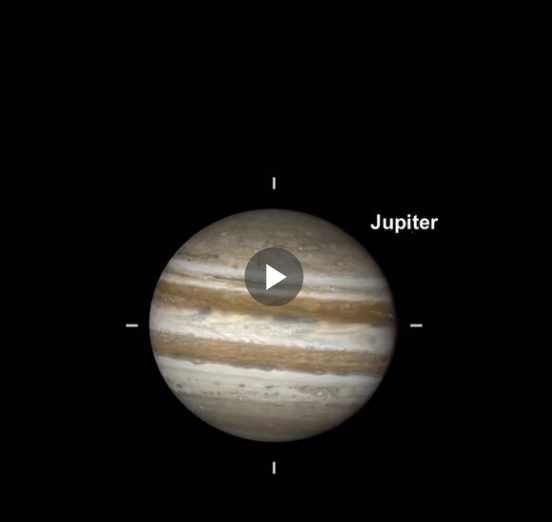“Jupiter is the supreme planet, the king of the solar system, whose vastness dwarfs all others, embodying the power and majesty of the heavens.”— Carl Sagan
Look up this week for a rare astronomical event as Mars and Jupiter draw close together in a stunning celestial alignment not witnessed since 2018. On Wednesday, these two planets will be the closest from Earth’s perspective, providing a breathtaking display.
Mars and Jupiter will appear so close to each other they will look like a “double planet,” astronomers said. @DavidMuir reports. https://t.co/1TTpgLoWZB pic.twitter.com/O6Pyw3n0IU
— World News Tonight (@ABCWorldNews) August 14, 2024
From Earth, Mars and Jupiter will appear nearly side by side, yet they are actually more than 350 million miles apart. This phenomenon, an astronomical conjunction, offers a brilliant example of cosmic serendipity. As Mars overtakes Jupiter in their orbital race, our vantage point from Earth aligns such that they seem exceptionally close together.
This event is visible to the naked eye, illuminated by the inherent brightness of both planets, making it a notable occurrence for sky enthusiasts. The next opportunity to see Mars and Jupiter this close won’t come for several more years, making this week’s alignment particularly special.
If you are up before sunrise tomorrow morning, Wednesday, August 14, be sure to look up into the southeastern sky to see Jupiter and Mars passing close to each other creating a very bright looking pair of stars#mars #jupiter #conjunction pic.twitter.com/5znujk6C6K
— MATTHEW M 🇺🇸 (@MorganMatthew70) August 13, 2024
The optimal viewing will occur just before dawn on Wednesday. However, the celestial alignment can be observed now, as the distance between Mars and Jupiter visually contracts and then expands. Elizabeth Warner, a faculty member in the Astronomy Department at the University of Maryland, encourages early morning observations. “You’ll be able to see how these two kind of dance through the sky,” Warner explains, suggesting that viewers watch the sky in the morning hours, ideally before sunrise, during this week.
Following this close approach, Mars will begin to distance itself from Jupiter. Yet, the astral show continues: on August 27, the duo will align with the crescent moon, crafting a striking tableau in the night sky, as noted by NASA.
Mars Meets Jupiter (pre-dawn)
On the mornings surrounding Wednesday, August 14, the orbital motion of the red planet Mars will carry it very closely past brilliant, white Jupiter.
The pair of planets will clear the eastern rooftops after about 2 a.m. EDT and then remain… pic.twitter.com/m3wnpKpDZI
— SkySafari (@skysafariastro) August 12, 2024
Don’t miss the chance to witness this rare dance of the planets in the early morning sky—it’s an ideal time for stargazing enthusiasts to revel in the wonders of our universe.
Quotes
- “In the swirling storms of Jupiter, we see the untamed beauty and ferocity of the cosmos, a reminder of the forces that shape our universe.— Brian Cox
- “Jupiter, the great protector, its colossal gravity shielding Earth from a cosmic barrage, a silent sentinel in the night sky.”— Neil deGrasse Tyson
- “Mars is there, waiting to be reached.”— Buzz Aldrin
- “The allure of Mars is not in what it is, but in what it promises – a new world, a new frontier, a place where humanity can start anew.”— Stephen Petranek
Major Points:
- Mars and Jupiter will appear closest to each other from Earth’s perspective on Wednesday, the closest alignment since 2018.
- Despite their close appearance, Mars and Jupiter will actually be over 350 million miles apart.
- This visual proximity is due to an astronomical conjunction, making both planets visible to the naked eye without the need for telescopes.
- The best viewing time for this celestial event is a few hours before sunrise on Wednesday, although the alignment can be observed throughout the week.
- After this event, the next notable celestial gathering will occur on August 27, when Mars and Jupiter will align with the crescent moon, creating a striking trio in the night sky.
Kirk Volo – Reprinted with permission of Whatfinger News

